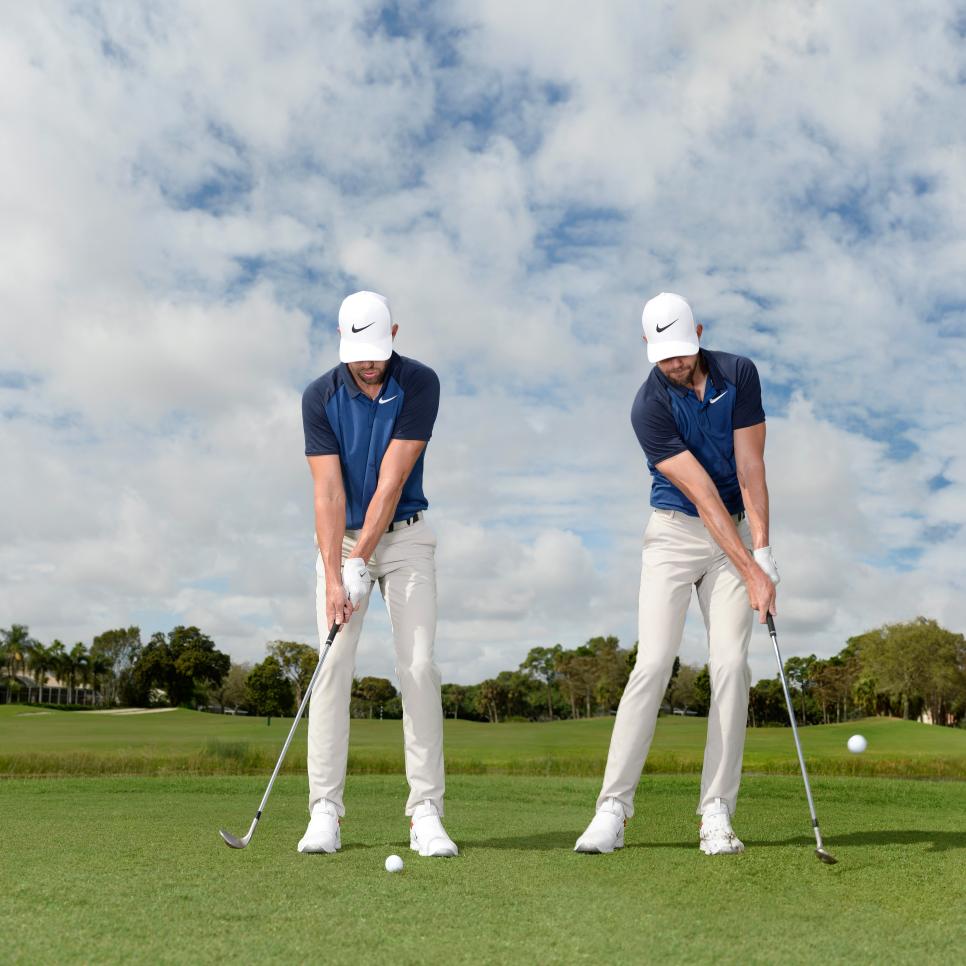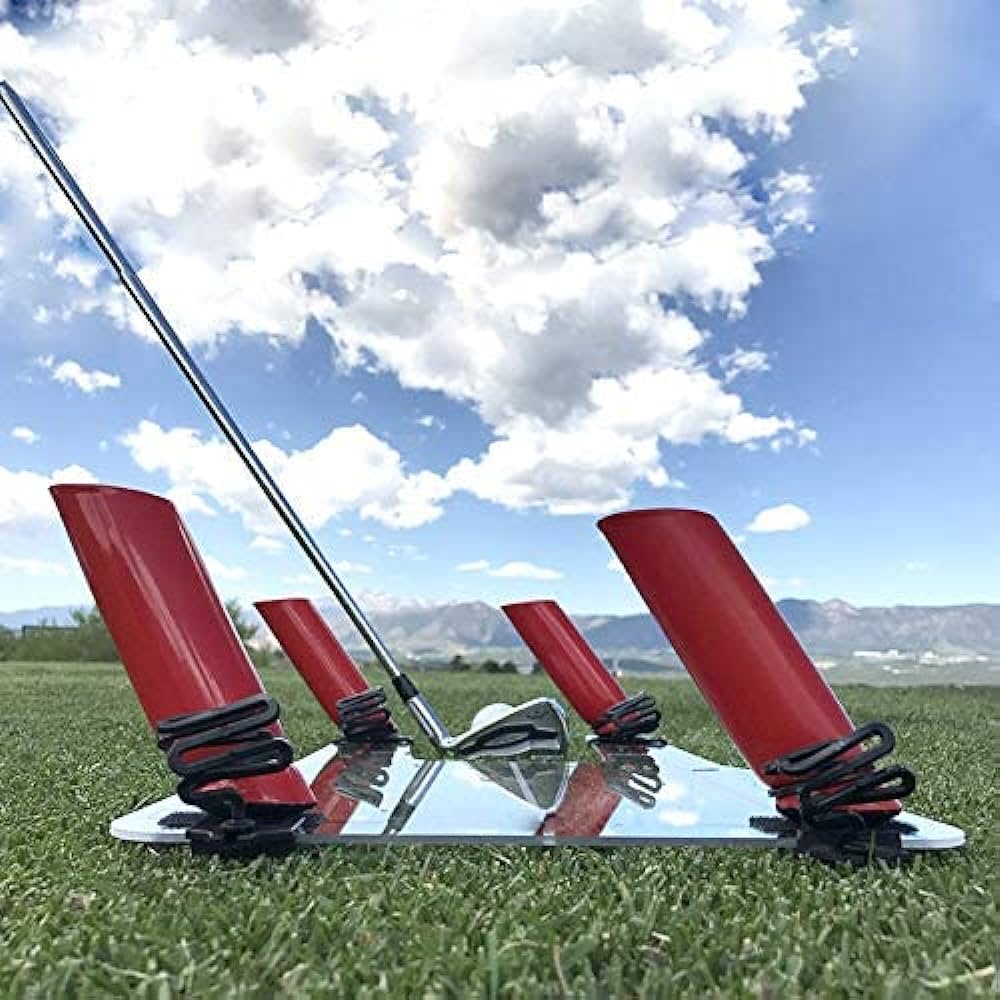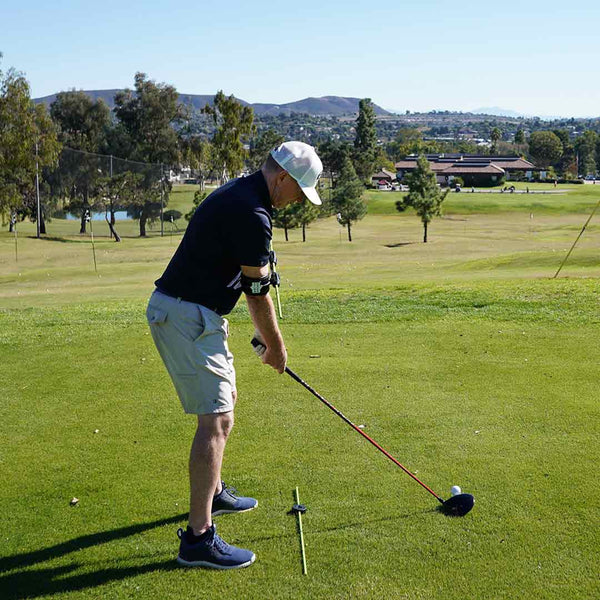I. Understanding the Basics of the Swing

A. Grip and Setup
How to hit golf ball straight?The foundation of a successful golf swing starts with the grip and setup. The way you hold the club and position yourself before the swing can significantly impact the direction and accuracy of your shots.
The grip is the golfer’s connection to the club, and it plays a crucial role in controlling the clubface through impact. The hands should work together as a single unit, allowing for a neutral and comfortable grip. The grip pressure should be firm enough to maintain control but not too tight, as this can hinder the natural release of the club through impact.
When setting up for a shot, the alignment of the body and the position of the ball are crucial. The feet, hips, and shoulders should be parallel to the target line, with the ball positioned appropriately in relation to the stance. A square and balanced setup provides the foundation for a consistent and accurate swing.
B. Alignment and Posture
Proper alignment and posture contribute to a golfer’s ability to execute a straight and powerful swing. The alignment of the body in relation to the target line sets the stage for a successful shot.
The feet should be shoulder-width apart, and the body weight evenly distributed. The posture should be athletic and balanced, with a slight flex in the knees and a straight back. The spine angle should tilt slightly away from the target, creating room for a proper shoulder turn during the swing.
Maintaining a consistent alignment and posture throughout the swing is essential for striking the ball squarely and directing it towards the intended target. By focusing on a sound and repeatable setup, golfers can lay the groundwork for a successful swing.
II. Developing a Consistent Swing Technique
A. Proper Body Rotation

The golf swing is a complex movement that requires coordinated body rotation to generate power and accuracy. Proper body rotation allows the golfer to transfer energy from the ground up, creating a fluid and efficient swing.
The rotation of the torso and hips should be coordinated with the arms and shoulders to create a seamless motion. The backswing involves the rotation of the upper body away from the target while maintaining the position of the lower body. The downswing then engages the lower body, initiating a powerful rotation that propels the club through impact.
By focusing on proper body rotation, golfers can generate more clubhead speed and deliver the clubface squarely to the ball. This fundamental component of the swing sets the stage for consistent and straight shots.
B. Keeping the Clubface Square at Impact
The position of the clubface at impact plays a significant role in determining the direction of the ball. Keeping the clubface square to the target line at impact is crucial for hitting the ball straight.
Throughout the swing, the golfer must maintain control of the clubface to ensure that it remains square through impact. Proper hand and wrist positioning, as well as a fluid release of the club, contribute to a square clubface at impact.
III. Enhancing Ball Contact and Distance Control
A. Focus on the Sweet Spot
The “sweet spot” on a golf club represents the area where the most energy is transferred to the ball upon impact. Hitting the sweet spot consistently is key to achieving reliable distance, accuracy, and a straight ball flight.
When the ball makes contact with the sweet spot on the clubface, maximum energy is transferred, resulting in the most efficient and powerful shot. Golfers should strive to align the center of the clubface with the center of the ball to optimize this critical impact point.
To enhance the focus on the sweet spot, golfers can work on drills and exercises that promote center contact. Additionally, practicing with impact tape or using a club with face markers can provide visual feedback on the quality of ball contact. Developing the ability to consistently strike the sweet spot leads to more predictable and straighter shots.
B. Maintaining a Balanced and Rhythmic Swing
A balanced and rhythmic swing is essential for consistent and accurate ball contact. A smooth and well-timed swing allows the club to move through the impact zone with precision, minimizing the potential for errant shots.
Balance is crucial throughout the swing, starting with the setup and continuing through to the follow-through. A stable and well-grounded base provides the foundation for a rhythmic swing. Golfers should focus on maintaining equilibrium and stability, allowing the body to move in sync with the swinging motion.
Rhythm is achieved through the coordination of body movements and the motion of the club. A consistent tempo and flow throughout the swing promote a controlled and predictable trajectory. By developing and maintaining a balanced and rhythmic swing, golfers can enhance their ability to strike the ball squarely, resulting in straighter and more controlled shots.
IV. Managing the Mental Aspect of Straight Shots

A. Visualizing the Straight Shot
The mental aspect of golf plays a significant role in executing straight shots. Visualization is a powerful tool that can help golfers create a clear picture of the intended shot, leading to greater precision and control.
Before the swing, golfers should visualize the trajectory, flight path, and ultimate destination of the ball. This mental imagery primes the mind and body to align with the desired outcome. By visualizing the straight shot, golfers can program their subconscious to guide the swing and impact in a manner that produces the intended result.
Incorporating visualization into the pre-shot routine can instill confidence and clarity, allowing golfers to focus on executing a straight and accurate shot. Practicing this mental technique can lead to improved consistency and shot-making on the course.
B. Staying Calm and Confident Under Pressure
Golf often presents pressure-filled situations, such as crucial shots on the back nine or during competitive play. The ability to stay calm and confident under pressure is vital for executing straight shots when it matters most.
Maintaining composure and confidence requires a deliberate approach to managing emotions and mindset. Golfers can benefit from techniques such as deep breathing, positive self-talk, and focusing on the process rather than the outcome. By embracing the challenge and acknowledging the pressure without succumbing to it, golfers can maintain a clear and focused state of mind.
V. Adjusting for Environmental Factors
A. Wind Direction and Strength
How to hit golf ball straight?Wind is a significant environmental factor that profoundly impacts a golfer’s game. The ability to adjust for wind direction and strength is crucial for achieving straight and accurate shots in varying conditions.
Understanding how wind influences the flight of the ball is essential for making the necessary adjustments. Headwinds, tailwinds, and crosswinds all affect the trajectory of the ball, requiring golfers to adapt their shot strategy accordingly. Headwinds can cause the ball to balloon and fall short, while tailwinds can enhance distance but reduce control. Crosswinds can push the ball off course, requiring precise compensation to counteract their effect.
To adjust for wind, golfers should assess the wind direction and strength before each shot. Taking note of the prevailing wind conditions and recognizing their impact on the intended shot trajectory is essential. Ball positioning, club selection, and shot shape adjustments are all important factors in mitigating the effects of wind and achieving a straight and controlled ball flight.
Practicing in diverse wind conditions and learning to adapt to varying scenarios fosters adaptability and skill in adjusting for wind on the golf course.
B. Course Terrain and Conditions
The terrain and conditions of a golf course play a key role in influencing the direction and control of shots. Factors such as elevation changes, slopes, and hazards can all impact the desired trajectory of the ball.
When navigating different terrain, golfers must assess the layout of the hole and adjust their approach to accommodate the prevailing conditions. Uphill and downhill lies can alter the ball flight, requiring adjustments to the swing plane and ball position. Sloping fairways and uneven lies can also influence the path of the ball as it travels toward the target.
In addition to terrain, course conditions such as firmness, rough length, and green speed can affect shot strategy and execution. Understanding how different course conditions impact the flight and roll of the ball enables golfers to make informed decisions about club selection and shot placement.
